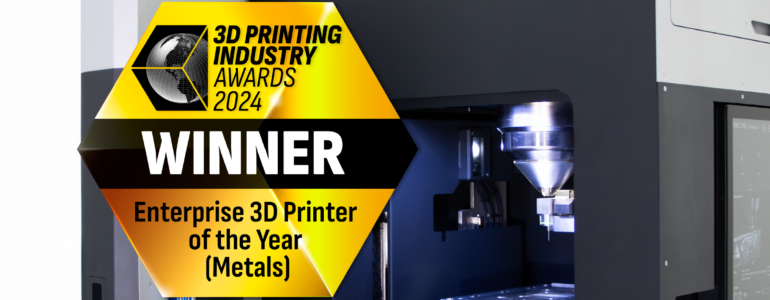We want to send you an important announcement regarding our latest materials developments focusing on our generation II technology with Blue Laser. As you might know, we develop & test several materials and we are adding some new ones to our portfolio:
Aluminum 4046 and Copper CuCrZr Technical Datasheets & Pricing
Please note that our recently published datasheets include all key technical specifications—recommended drive wheels, required inert-gas configuration, and compatible substrate materials. These new Aluminum 4046 and Copper CuCrZr materials will be added to our official price list shortly; you will receive a notification as soon as they are available for order.
Advanced Metallurgical 3D Printing with Meltio
Meltio can 3D‑print parts in metals such as copper and aluminum using its proprietary blue‑laser technology. At present, optimal performance is achieved with thin‑walled or small components; printing larger or solid geometries still presents challenges due to the thermal behavior of these alloys during heating and cooling. Our R&D team is actively refining process parameters to extend reliability to larger formats.
Material Maturity: Technology Readiness Levels
To communicate development progress clearly, we employ the international TRL (Technology Readiness Level) scale (1 = experimental through 9 = ready for industrial production). Internally, we’ve adapted it into four Meltio tiers:
- Meltio Explore (TRL 1–3): Initial exploration for R&D use only.
- Meltio Develop (TRL 4–6): Concept validation, prototype testing, ongoing parameter refinement and profile standardization.
- Meltio Qualified (TRL 7–8): High‑reliability materials ready for demanding applications.
- Meltio Proven (TRL 9): Fully validated for continuous industrial production.
Copper and aluminum currently sit between TRL 3 and 5, placing them in our Develop phase (validation and optimization). In contrast, steels, nickel alloys and titanium are already in TRL 7–9, meaning they are fully proven in real‑world applications.
Frequently Asked Questions
- What is the current development status of copper and aluminum for 3D printing with Meltio?
- “Copper and aluminum are at a mid‑development stage. We have already achieved functional results on small parts, and now we’re working on scaling their industrial application.”
- How can customers benefit from collaborating with Meltio on new materials like copper and aluminum?
- “Partnering with Meltio at this stage grants you early access to next‑generation technology—delivering a competitive edge and positioning you at the forefront of innovation.”
- Why is a lower TRL not necessarily a disadvantage?
- “Our TRL‑based approach ensures full transparency: you always know exactly where we stand and where we’re heading with each material.”
- Why are copper and aluminum strategic materials for 3D printing?
- “These alloys offer exceptional thermal and electrical conductivity, making them critical in sectors such as aerospace, electronics and energy. Mastery of their additive manufacturing opens huge competitive advantages.”
- Are there fully validated materials available for immediate industrial use?
- “Yes—Meltio’s portfolio already includes proven steels, titanium and nickel‑based alloys (TRL 7–9). You can begin production today while we support your transition to copper and aluminum.”
- How does Meltio maintain transparency about material maturity?
- “With our Meltio Tier system—anchored in TRL methodology—we provide a clear roadmap showing which materials are ready, which are under development, and how they will evolve.”
